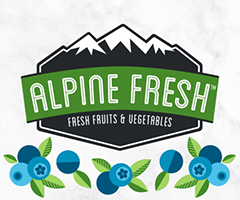2016 Challenges Harvesting: Lessons Learned from the Effects of Weather on the Season
THE 2016 HARVEST SEASON was very challenging for most Florida blueberry growers. Production was very low during the typical late March/early April traditional “Florida blueberry harvest window.” By the time significant volumes of Florida fruit were ready for harvest, ample volumes of berries from other southeastern states, California, and Mexico had entered the marketplace and lowered demand for Florida blueberries. Most of the problems faced by Florida growers this season were weather-related.
Blueberry cultivars grown in Florida are considered “low chill” but not “no chill.” Most cultivars grown in Florida have a chilling requirement between 100 and 300 hours. As depicted in the chart on Page 18 (of our summer print edition), little to no chill accumulation had occurred in most Florida blueberry production regions by the end of December 2015.
It should be noted that South Georgia blueberry production regions received some chill accumulation, although much less than normal by the end of December 2015. It appears that this chill accumulation may have been enough to initiate bloom and crop set on many Georgia blueberry farms.
Hydrogen cyanimide (HC: Trade names Dormex and Bud-Pro) is a plant growth regulator that is applied during the dormant period by many commercial southern highbush blueberry growers. This product tends to enhance development of vegetative buds emerging from dormancy and results in earlier leaf canopy establishment. Early leaf canopy establishment can be a challenge for many southern highbush cultivars grown in Florida. Early leaf canopy establishment supports fruit growth and often results in an earlier and more uniform harvest. In most southern highbush blueberry cultivars, some chill accumulation prior to HC application is required to make this product effective and also to avoid flower bud injury, especially on HC-sensitive cultivars. During this exceptionally mild winter, numerous growers reported that application of HC, with little to no chill accumulation, resulted in severe bud damage to the early developing flower buds in the more HC-sensitive blueberry cultivars, such as Jewel; an additional fact negatively impacting early harvest volumes.
Once flowering, pollination, and fruit set have occurred, temperature can have a dramatic effect on the rate of fruit development. Exposure to warm temperatures facilitates crop development. Growing degree days (GDD) are often used to estimate crop exposure to warm temperatures and are calculated using daily high and low temperatures related to a base temperature for a given crop. GDD calculations are used in a wide variety of crops to model expected crop development rates for given temperature regimes. Additionally, GDD are utilized for prediction of emergence for certain insect pests.
Although there are no documented correlations for GDD and rate of crop development in southern highbush blueberries, there appears to be a relationship. A blueberry industry group in Georgia has been working with GDD in their crop forecasting for a few years and the concept may be evaluated in Florida starting next season. A figure utilizing AgroClimate GDD data generated from temperature readings at the Dover Florida Automated Weather Network (FAWN) station, which is situated in close proximity to a significant portion of the Central Florida blueberry production region, is presented for consideration on page 34 (of our summer print edition). A base temperature of 50° F is used for the GDD calculations, as it is the value utilized by the Georgia group.
GDD accumulation for both 2015 and 2016 were mainly below historical averages until sometime in early March; a period approximately one month after initiation of the bloom period this year. In the winter of 2014-15, the climate phase was on the borderline of neutral and weak El Niño. Somewhat warmer conditions in January 2015 initiated bloom and fruit set earlier than in 2016. This combined with much warmer than normal temperatures for mid- and late-March 2015 resulted in a harvest that peaked approximately the same time as most years in Florida and earlier than in 2016. The figure below depicts movement of 12 pint flats in lots of 10,000 lbs. for two-week reporting segments during the last five years, as reported by the United States Department of Agriculture (USDA)/ Agricultural Marketing Service (AMS).
The 2016 harvest “mirrors” that of 2014 very closely. When one considers that the acres of blueberries harvested in 2014 were significantly less than 2016, the fact that the total 2014 harvest exceeds that of 2016 reflects the seriousness of the situation faced by most Florida producers this season.
In 2014, late harvest volume was higher than any other season, indicating that early harvest volume in states to the north was low, permitting Florida growers to extend their harvest. In most years, many farms have harvestable product in mid- to late-May, but the volume being harvested in other states depletes the harvesting workforce and tends to bring market prices down to a level where it becomes unprofitable to continue the harvest.
CREDITS
Article by GARY ENGLAND, multi-county Extension agent, IFAS, University of Florida, Lake County, and JEFF WILLIAMSON, Extension specialist, Horticultural Sciences Department, IFAS, University of Florida, Gainesville.
This article was adapted from the June 2016 Vegetarian Newsletter, Issue No. 613, UF/IFAS.





